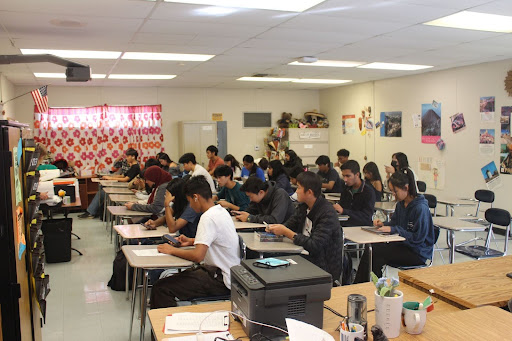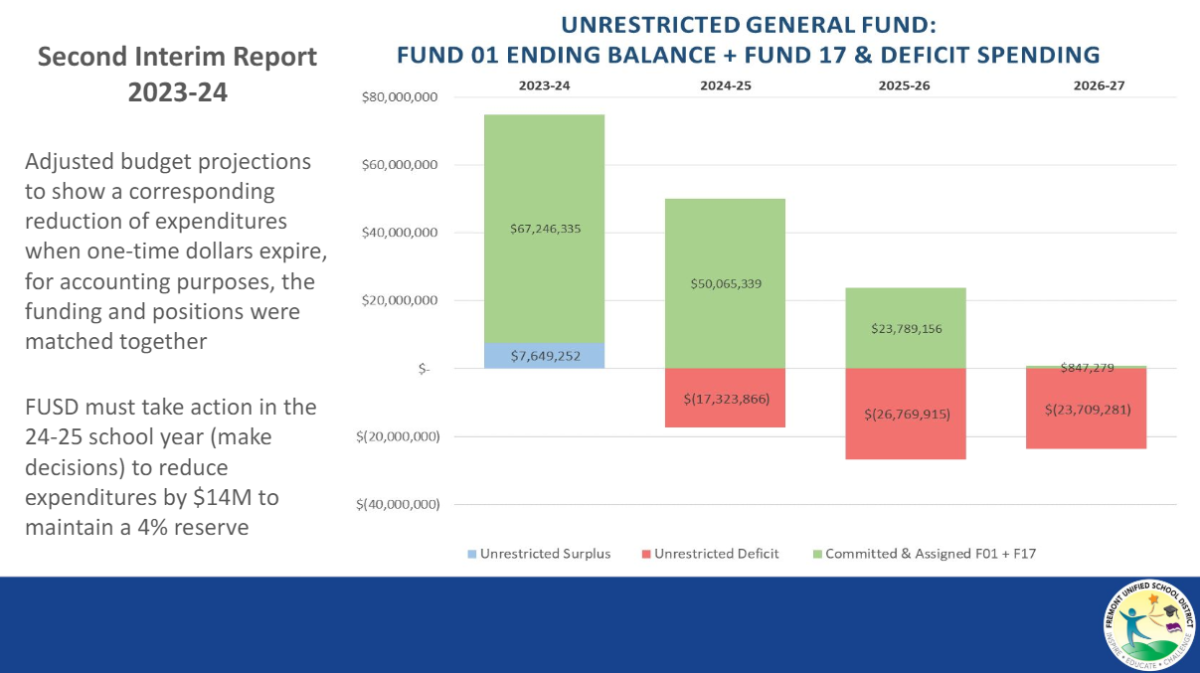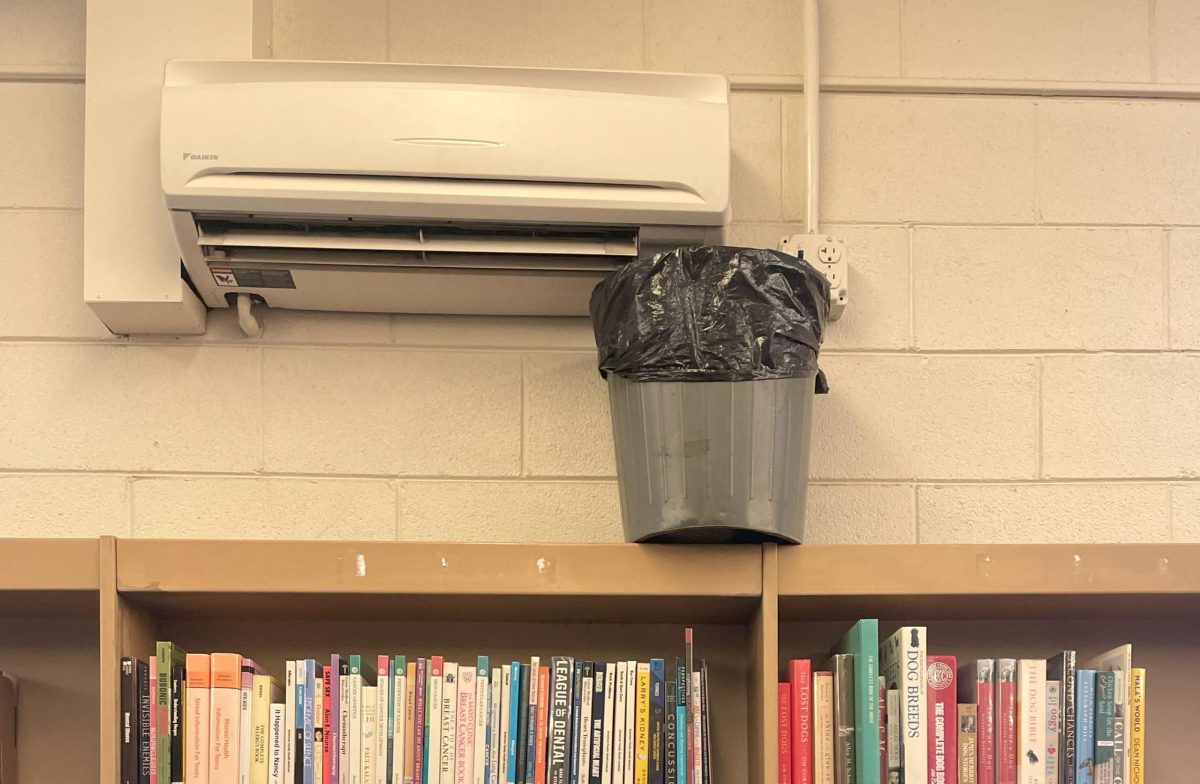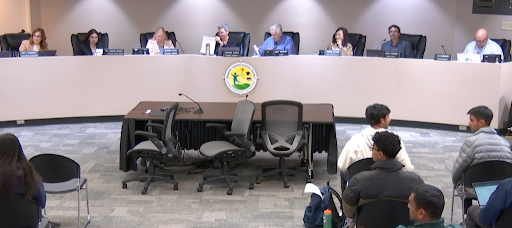“Your English grade is based on how much a teacher likes you” – as commonly expressed on social media. While this statement is not necessarily true, it is true that English is indeed a highly subjective subject. Depending on the teacher, an A grade in one class could be a C in another due to different grading styles, rubrics, and expectations for students to meet.
To understand the difference in grading systems between Irvington High School AP English Lang teachers, The Voice gave Ms. O’Connor and Ms. Martinez the same essay to grade, written by an anonymous student from Ms. Ferrer’s AP English Lang class last year. The essay was a take-home argumentative essay on the topic of how burnout culture affects young people today.
Using a standards-based grading rubric, Ms. Ferrer graded her student’s essay with an Exceeds Standards in the category of developing claims and counterclaims, Meets Standards in the category of citing strong and thorough textual evidence, and Exceeds Standard in the category of standard English grammar usage and writing sophistication. This grade was finalized after a redo from the student’s original score, and it also corresponds to a 45.83/50 or 91.66% in a traditional grading system.
The values behind standards based grading include mastery, growth, standards alignment, intrinsic motivation (motivated by personal learning, instead of transcripts), and equity (reducing the impact of external circumstances on your academic grade).
Ms. Martinez incorporated a feedback system of grading this year in hopes of achieving more equity in the classroom, and therefore gave the student constructive feedback on the organization and analysis of arguments in their essay.
“Overall, the essay had good content, although it also lacked some evidence to back up the student’s ideas. I also left some comments on how the student could improve the organization of paragraphs,” she explained.
In this system, students in Ms. Martinez’s class only receive feedback on individual essays instead of receiving a fixed grade. Feedback in her class can vary from individual to individual, stronger students perhaps receiving harsher feedback to further improve their writing skills. Students then implement their feedback into future essays. By the end of the quarter, students organize all of their essays into a portfolio and submit it to a Google Form with the grade they believe they deserve, followed by a justification. Afterwards, they attend a 1:1 meeting with Ms. Martinez to discuss and finalize their grade in the class.
Ms. O’Connor declined to grade the student’s essay using her traditional grading system due to a difference in circumstances of writing the essay.
“The prompt seems to be a standard argumentative prompt, but the essay reads like a synthesis or even a research paper–with no citations, which would have a very detrimental effect on the essay grade in my class. When I grade my own students, I know what instruction they have had, and that does affect grading,” said Ms. O’Connor.
Ms. O’Connor is skeptical about grading for equity in an AP English Lang class. She states that from her observations, “AP students tend to be very point driven and when given optional assignments, the majority of them did not do it”. From her perspective, points should be awarded to students when they do the work. Ms. O’Connor employs a traditional grading system in which assignments are out of distinct points. For instance, in-class essays are out of 50 points and take-home essays are out of 100.
Ms. Ferrer shares that she values quality while grading her students’ work. Her rubric places less emphasis on mechanics and technical rules enforced by ELA standards, and focuses more on AP standards. “If your argument is well supported and your voice is strong, then that makes your essay really good. I don’t care so much if you use double spacing or citations in your essay,” she says, elaborating on the difference between both standards.
Despite these differences, Ms. Ferrer notes that the AP exam score distribution is similar between all three classes.
“Your grade in the class should reflect your exam score. A lot of AP teachers think that if a student is getting an A in the class, they should be able to get a 4 or 5 on the exam. That’s maybe where it’s not aligned because I have students who got 3s on the exam and still have an opportunity to get an A in the class since I allow redos on essays,” she shares.
The English department strives to vertically align writing instruction to decrease these differences.
As head of the English department Ms. Martinez expresses, “It’s an ongoing process but we want to try to have the same terminology in essays such as defining what terms like topic sentence, thesis, and analysis really mean to each of us.”
























